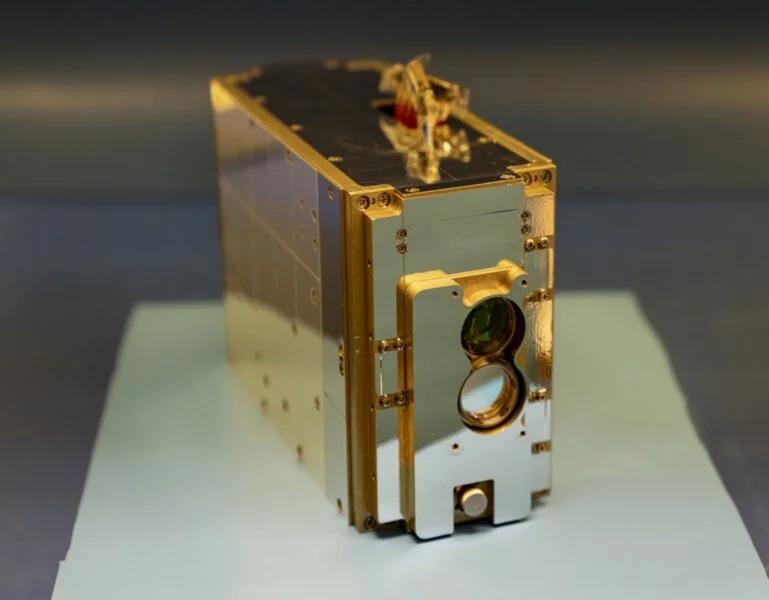In May 2022, the TeraByte InfraRed Delivery (TBIRD) payload on a small CubeSat satellite was launched into orbit 300 miles above the Earth’s surface. Since then, TBIRD has been delivering terabytes of data via an optical link to a terrestrial receiver in California at record speeds of up to 100 gigabits per second – 100 times faster than the fastest Internet in most cities.
This data rate is 1000 times faster than radio frequency communication channels traditionally used for satellite communication and is the fastest ever achieved by space-to-earth laser communication. And all these record speeds were made possible by a communications load roughly the size of a facial tissue.
In 2014, MIT’s Lincoln Laboratory proposed the TBIRD mission as a way to provide unprecedented opportunities for low-cost science missions. Today, scientific instruments in space routinely generate more data than can be sent back to Earth via typical space-to-ground communication channels. With its small, low-cost field and ground terminals, TBIRD can enable scientists around the world to take full advantage of laser communications to transmit any data they can imagine.
Designed and built at Lincoln Laboratory, the TBIRD communications device was integrated into a CubeSat manufactured by Terran Orbital as part of NASA’s Pathfinder Technology Demonstrator program. NASA’s Ames Research Center created this program to develop a CubeSat bus (the “vehicle” that powers and operates the payload) to launch science and technology demonstrators into orbit faster and cheaper.
Weighing approximately 25 pounds and the size of two cereal boxes stacked on top of each other, CubeSat was launched into low Earth orbit (LEO) on the Space X Transporter-5 mission from the Space Force Station in Cape Canaveral, Florida, in May 2022. The optical ground station is located in Table Mountain, California, where most of the weather is observed below the mountain’s summit, making this part of the sky relatively open for laser communications. This ground station uses a 1-meter telescope and adaptive optics (to correct for distortions caused by atmospheric turbulence) at NASA’s Jet Propulsion Laboratory’s Optical Communications Telescope Laboratory, and Lincoln Laboratory provides specialized equipment for TBIRD ground communications.
“We’ve demonstrated higher data rates than ever before in a smaller package than ever before,” said Jade Wang, program manager for TBIRD’s Payload and Ground Communications Lab and deputy group leader of technologies for the Optical and Quantum Communications Group. “While it may seem futuristic to send data from space using lasers, there is the same technical concept behind the fiber optic internet we use every day. The difference is that laser transmissions take place in an open atmosphere, not in closed fibers.”













